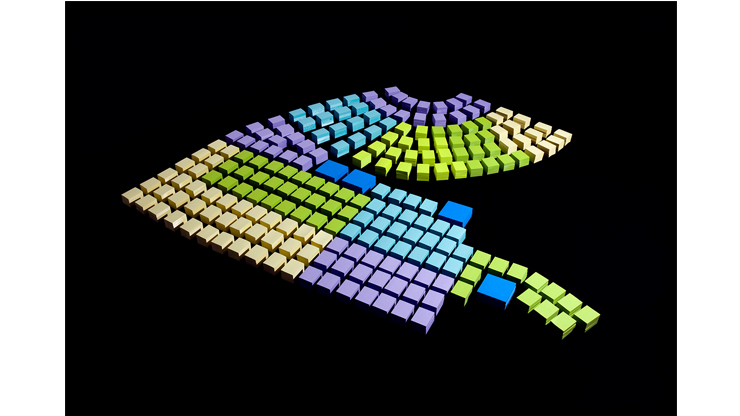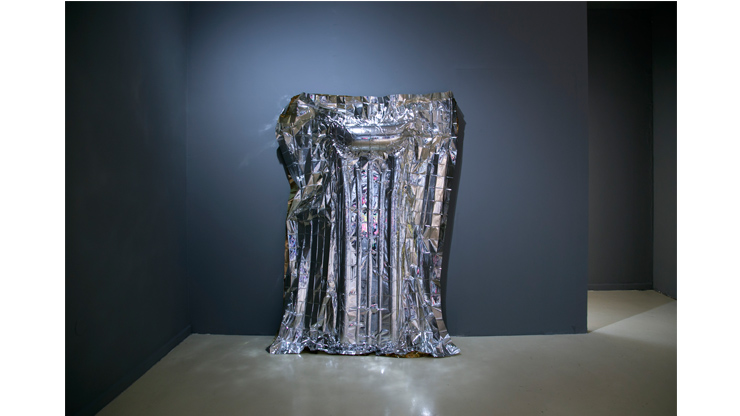The title of the exhibition of works by Hadar Saifan (b. 1985) – “Motel” – is actually the name of an emergency contingency plan in Israel, detailing the steps for military and civilian preparedness and readiness in times of war.
In this, her first solo museum exhibition, Saifan examines situations of prolonged collective stays in bomb shelters in times of emergency – a topic that also featured in her earlier photography and video works, based on her childhood experiences at Kibbutz Dafna, near Israel’s northern border. Her ongoing preoccupation with the subject appears to be an extension of her personal life experience, reaching beyond it to highlight the absurdity of what is perceived to be normal routine in Israel, where the reality of life under perennial threat is accepted as a matter of course.
At the center of the exhibition space, Saifan has set up a large rectangular surface made up of inflatable air mattresses, covered with silver-backed thermal blankets of the sort used by emergency medical teams when attending the injured. On the surrounding walls are black photographs in which are embedded rectangles of various fluorescent-bright colors (like Post-It notes). The shiny and seductive softness of the mattresses appears to be cocooned within the somewhat saccharine colors of the rectangles in the photographs. The installation invites one to sink into it in a carefree manner, as though it were a holiday resort, when in fact it is a somber and effective cover for the chilling threat behind it.
The image that appears in the photographs on the walls is modeled on actual maps used for evacuating civilians to bomb shelters. In the initial stage, an internal evacuation takes place within each community, with civilians making their way independently to a bomb shelter near their homes. In the evacuation maps held by the local authorities, the homes in each neighborhood are color-coded, based on their location, to reflect their respective designated shelter.
As in most of her works, here, too, Saifan approaches this emotionally charged subject in a formalistic, matter-of-fact and somewhat detached fashion, focusing on the formal aspects and material quality of the elements and objects that she knows so well. This formal and material approach may be the result of the emergency protocols that were drilled into her at the kibbutz where she grew up – as though, by automatically triggering a strategic plan of action that was prepared well ahead of time, such preparations might suppress the feelings of chaos, anxiety, and terror.
Less Reading...

